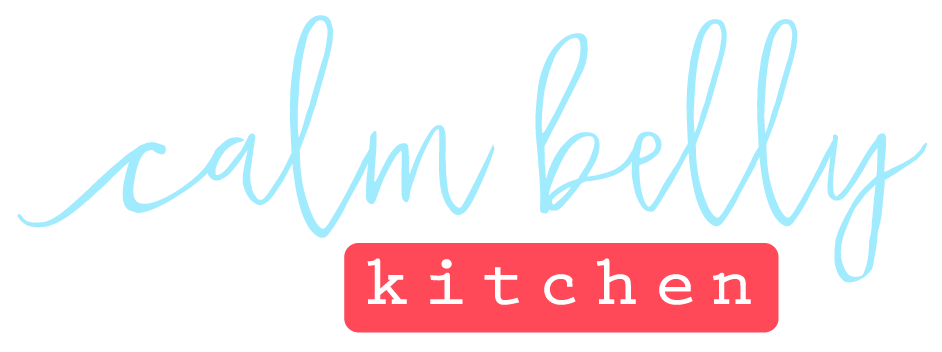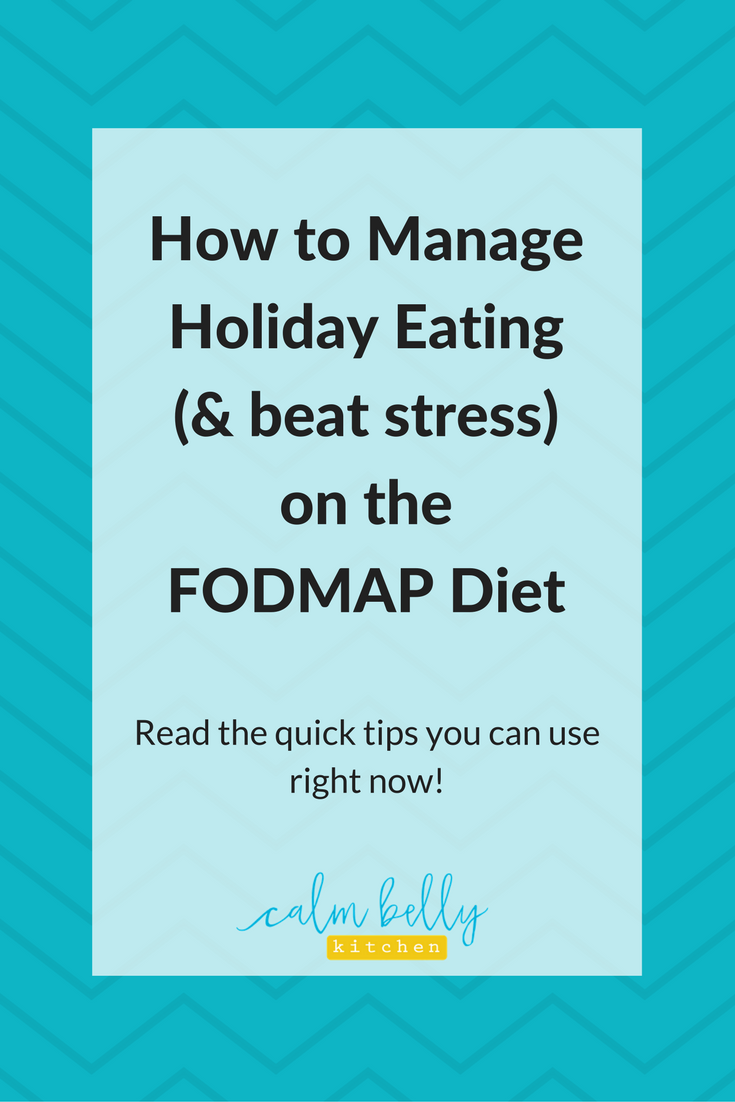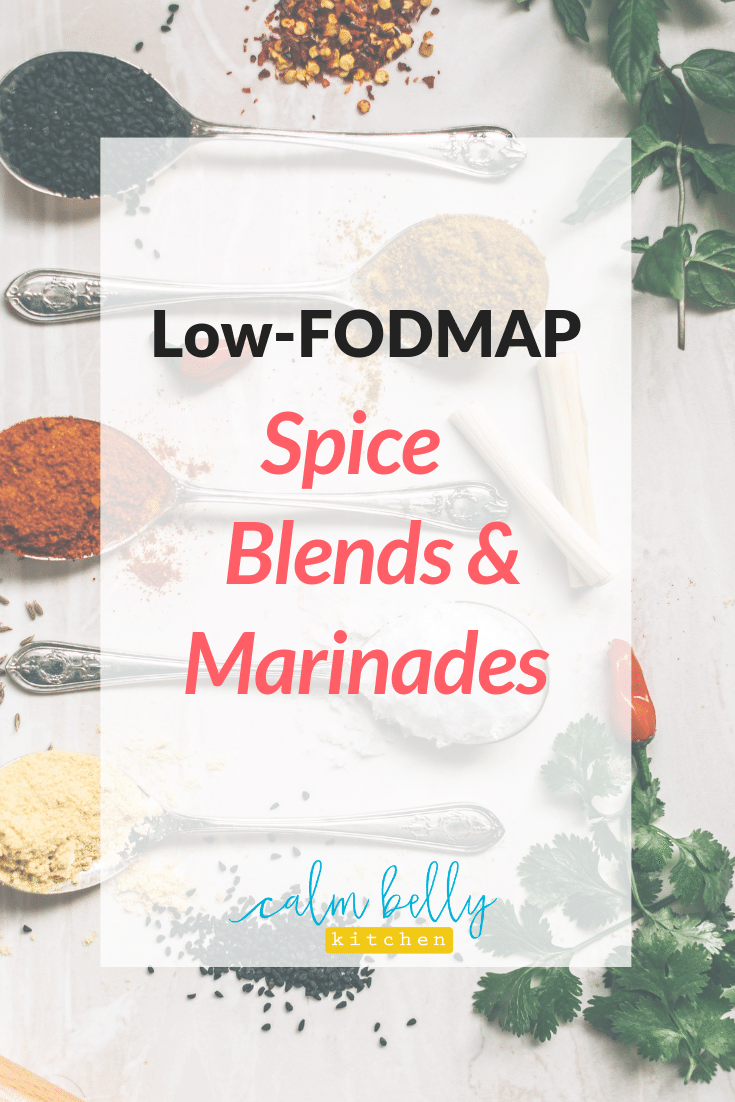Like many of you, when I first heard about the FODMAP diet plan as a way to change my own IBS symptoms, I was overwhelmed. Not just with all the information out there, although that definitely was the case. Sometimes, it was overwhelming how much I didn’t know.
Four years ago, there was very little information to go on, no explanation of the nuances. Suddenly having to change my diet overnight felt very difficult and complex, with no guidance on how to make it work in a practical sense.
There's more info out there now, but I think people can still relate to what I experienced. Also, a lot of the current information is still conflicting or out-dated.
I had to forge my own path. And a huge part of why I do what I do is that I believe that you shouldn’t have to do that to change your life for the better!
(Which is why I started Calm Belly Kitchen!)
Looking back on it, there’s so much I wish I’d known before I started. So many tips and tricks and even affirmations that would’ve made this whole thing a lot smoother—and a lot less emotional.
I've also asked members of the community what they wish someone had told them when they first started out with the FODMAP diet plan. Many of the answers lined up with my experience!
So today, I'm going to share the things that I wish I knew when I first started. Hopefully, you’ll find this useful, no matter where you are in your journey.
#1 Onion and garlic are not absolutely essential for flavor
It seems like such a minor thing now, but this was definitely my number one source of anxiety and fear and stress when I started to grasp what the FODMAP diet really entailed. All those recipes I relied on would have to be modified or thrown out—and at first, I had no idea how to even begin.
(This is also one of the biggest struggles that I hear from folks who send me emails, easily in the top three questions that I receive!)
For years, I made my living as a recipe developer. I love food, and own an embarrassing amount of cookbooks! And I can tell you that giving up onion and garlic is not the end of the world.
Sure, it’s an adjustment, but it’s not impossible. While I, personally, can tolerate a bit of onion, I don’t do great with garlic, and I don’t really keep either of them in the house. It’s worth it, to me, to see the success of following the FODMAP diet plan in my own symptoms.
In a way, whether it’s onion, garlic, or any other food, it really won’t be as bad as you think, giving it up temporarily or even for longer periods of time. I promise.
You can check out this ultimate guide for other ways to flavor food that won’t trigger your IBS!
#2 A major diet change is hard, and it will take you time to get in your groove
Okay, I know I just said that giving up some foods isn’t the end of the world. And it’s not! But any major lifestyle change means changing all of your patterns—even ones you might not be aware you have. It will take time. It doesn’t happen overnight.
Doctors love to give you a little two- or three-page handout that makes it seem super easy to just completely overhaul your diet overnight, but the truth is, not many people can just turn completely change the way that they cook, shop, and eat in one day.
You have to be patient with yourself. You have to give yourself time (and grace!) as you begin the process.
Even though I had cooking skills and already was a healthy eater, I couldn't turn it around overnight. I needed time to get comfortable with the changes in my eating habits.
Whatever you do, don't let beginner overwhelm hold you back from starting.
Just know that it's going to take time to get comfortable, and it's okay to be to be stressed about it when you start. If you mess up, that's okay! Don't beat yourself up—keep going.
#3 Eating in a social setting is less of a big deal than you might think
A lot of people ask me this one, especially as they start to really think about how often we all eat in social settings—restaurants, work lunches, family meals.
When you can control the food, things tend to work fine. But when other people are cooking? That can be a little stressful.
I get it.
If you’re worried about how the changes in your diet will affect eating out at restaurants—whether it’s asking for order changes or worrying about being judged for what you put in your face—that’s normal.
No matter how much we worry that other people are judging us, people are always more concerned about what they are doing, than what other people are thinking. It’s just our nature! We’re all a little self-centered like that.
And if someone does give you grief or side-eye for swapping your asparagus for a side salad? Then they really need to find a hobby.
What you eat isn’t a judgement, or critique, of anyone else’s eating. Refusing a food, making healthier choices, these are all worth it, to make your body feel better.
Prefer to watch? Check out the video below...
#4 You really do need to listen to your body
If you’ve spent any time on this site, then I know you’ve heard this one before. But it’s absolutely true. Listen to what your body is saying—not just with the food, but with all of it.
The great thing about making this kind of diet change is that you have this really excellent opportunity to learn about all the other factors that affect your digestion, besides just the FODMAPs. When you take those away, you start to listen to the other little messages your body is sending.
For example, stress is a big deal for me. It messes with my stomach. Now I can hear that message more clearly, and adjust my lifestyle accordingly.
Another thing I learned was that adjusting the overall volume of food I was eating helped with my symptoms. I was just giving it too much to do! Eating smaller meals, letting them digest well, allowed my body to tell me, hey, you’ll feel less bloated and heavy and gross.
For many of my clients, I often hear that their period sends them a huge message, thanks to fluctuating hormones! As you can see, all of these non-food factors can affect your gut.
Listen to them.
Every body is different. What’s yours telling you?
#5 Sourdough bread is your best friend
For those of you who love bread, this one is really exciting.
(What? Bread is exciting! Especially bread that’s safe and delicious!)
This wasn’t even established when I was first beginning my FODMAP diet journey, but within the last two years, Monash has tested sourdough bread and found that, because of the slow fermentation process, sourdough bread has an extremely low FODMAP content.
The only catch is that it MUST be made using a traditional slow rise process.
Luckily, it’s easy to tell if sourdough is indeed slow rise: Check the ingredients. If the sourdough bread contains yeast or enzymes, then it was not made with the slow rise method.
Traditional slow-rise sourdough requires just three main ingredients: flour, water, and salt. Instead of yeast, a “starter” causes the bread to rise. This happens when natural bacteria occurring in the air slowly ferments by consuming the FODMAPs and other carbohydrates in the flour. This produces gas, which creates the rise in the bread.
Great news if you’ve been missing bread!
#6 You really do need to reintroduce FODMAPs by category
Like most of us, I spent a long time on the elimination phase of the FODMAP diet. Because I was feeling better, and seeing a reduction in my own symptoms, it felt really comfortable just to stay in that highly restricted zone.
And yet it’s really important to test foods and reintroduce them—not just because it’s healthier to have more variety in your diet, but also because that’s the only way you’re going to know your personal FODMAP tolerance levels.
One thing I learned when I did finally reintroduce FODMAPs is that I have a pretty high tolerance for wheat. I can still eat my homemade pizza and croissants, and for me, that’s amazing.
On the other hand, I used to love making sweet potato fries, but now I can only have a few bites. A bigger serving of sweet potato makes my stomach feel heavy and creates unpleasant symptoms the next day. And there’s no way I would’ve known that without reintroducing FODMAP categories one by one.
You might be taking a risk with a certain food during this phase, but the knowledge you will gain will be priceless.
#7 You won’t always feel deprived!
When we talk about diet changes, there is always this lingering worry, this fear of deprivation.
And it makes sense: We’re taking away a lot of common foods that are in favorite dishes, at home and out in the world. It’s a huge adjustment, looking at food in this new way.
Yes, it will absolutely feel like an adjustment. You’re definitely going to hate taking away some foods—but eventually, the feelings of being so healthy and feeling so much better and feeling empowered will begin to outweigh the difficulties.
You may still experience IBS symptoms. That’s totally normal. But overall, you will feel so much better, because you’ll finally have control over how your body feels.
And those are my top seven items I wish I’d known before starting the FODMAP diet!
They’re definitely truths for me, and ones I hear from my clients as well. I hope that they can empower you to begin your FODMAP journey.







































